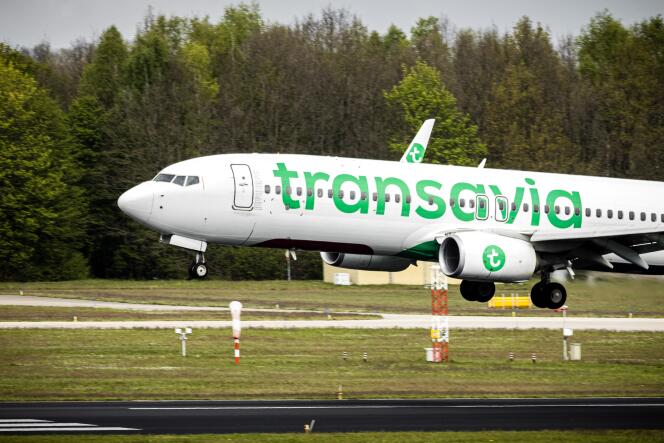


The more planes there are in the sky, the more they destroy the climate. This is the finding highlighted by a study by the NGO Transport & Environment (T&E) published on Friday, April 19. In 2023, the vigorous upturn in air transport activity resulted in a sharp increase in CO2 emissions. According to T&E, which analyzed flights departing from France, the main culprits behind this rise in pollution are low-cost airlines.
In the NGO's top 10 list of the most polluting airlines, low-cost carriers EasyJet, Transavia and Ryanair occupy three of the top four places. While Air France is far and away in first place in France, it is essentially the low-cost airlines that have caused the increase in CO₂ from French airports. Last year, flights departing from Paris increased by 10% compared with 2022, i.e. some 700,000 take-offs. The 2,000 daily departures counted in 2023 sent some 20.3 million tons of CO₂ into the atmosphere, up 12.5% on 2022.
T&E points out that the two worst performers are Transavia and Ryanair. "Transavia and Ryanair have far exceeded their 2019 emissions levels," the NGO found. Volotea, another low-cost carrier present in France, is only in 10th place but also shows a sharp rise. EasyJet is the only airline in the category to have lower emissions than in the pre-Covid-19 period.
According to figures for 2023, Transavia, Air France's low-cost subsidiary, takes the cake. With an increase of over 90.9%, Transavia's CO2 emissions almost doubled compared with 2019. However, this poor result does not mean that the low-cost carrier's planes are more polluting than those of rival airlines. Transavia has polluted almost twice as much because its fleet has almost doubled in size in four years. Between 2019 and 2023, it grew from 38 to 71 aircraft.
Despite this growth, the Air France subsidiary has defended itself. It is still far from rivaling Ryanair or easyJet, Europe's two leading low-cost carriers. While Transavia is aiming for a fleet of around 100 aircraft in the medium term, Ryanair and easyJet already operate "between 300 and over 500 aircraft," said the Air France subsidiary. Above all, Transavia's growth has partly come at the expense of Air France's. Some of the new destinations operated by Transavia were previously operated by its parent company. Air France announced that it will be leaving Orly to make way for Transavia.
While not all long-haul routes have reopened, medium-haul destinations are booming. "The rebound in air travel is monopolized by low-cost airlines, which have increased their flight numbers by 13% in 2023," said Jo Dardenne, aviation director at Transport & Environment. T&E denounces the fact that polluters don't always pay. In 2023, Air France paid "only €46 million in carbon tax, whereas it would have had to pay €700 million if all flights departing from Europe had been taxed," the NGO calculated.
